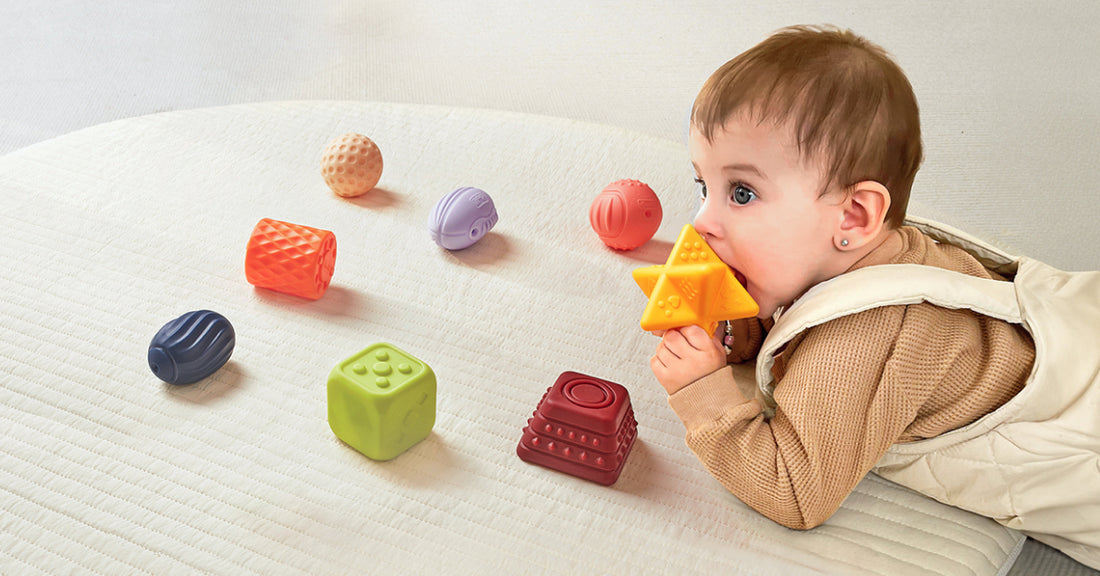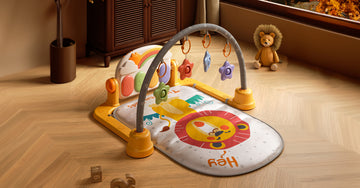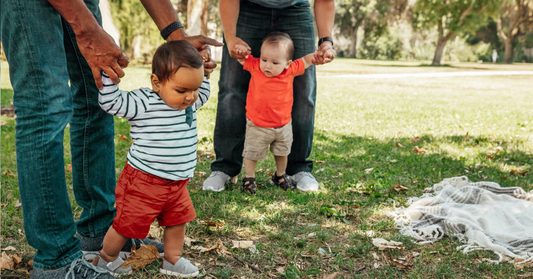Когда у младенцев начинается время на животике

Время лежания на животе — одно из самых ранних и важных упражнений в развитии вашего ребенка. Это не просто помощь в достижении им важных этапов — это развитие силы, уверенности и любопытства, которые прокладывают путь к ползанию, сидению и исследованию. Но многие родители задаются вопросом: когда следует начинать выкладывать ребенка на живот и как сделать это время приятным?
Давайте рассмотрим каждый этап с советами и рекомендациями, которые помогут сделать время, проведенное на животе, позитивным опытом для вас и вашего малыша.
Быстрые этапы времени на животе по возрасту
Прежде чем мы углубимся в детали, вот полезный обзор основных этапов, которых следует ожидать:
| Возраст | Ежедневная практика | Вехи | Лучшие советы |
|---|---|---|---|
| Новорожденный - 2 месяца | 2-3 мин, 2-3 раза в день | Кратковременное поднятие головы, повороты головы из стороны в сторону | Грудь к груди, скрученное полотенце для поддержки |
| 2-3 месяца | 3-5 минут, 3-5 раз в день | Поднимает голову на 45°, опирается на предплечья. | Коврик на полу, игрушки рядом. |
| 3-4 месяца | 5-10 минут, 4-5 раз в день | Подъем головы на 45-90°, перенос веса | Используйте зеркала и игрушки для вовлечения |
| 4-5 месяцев | 10-15 мин, 4-6 раз в день | Сильный контроль головы, отжимания на руках | Разложите интерактивные игрушки, меняйте их положения. |
| 5-6 месяцев | 15-20 минут, несколько раз в день | Движения, предшествующие ползанию, повороты | Дайте больше свободы на полу, включите полосы препятствий |
Когда и как начинать выкладывать ребенка на животик
Хотите верьте, хотите нет, но время на животе может начаться практически сразу после того, как вы принесли новорожденного домой! Даже несколько минут пару раз в день помогут вам набраться сил с первого дня. Начните с уютного подхода, попробовав время на животе грудь к груди, когда ваш ребенок лежит на вашей груди, пока вы откидываетесь назад. Это не только позволяет ему практиковать подъем головы, но и держит его близко, что может сделать эти первые моменты времени на животе успокаивающими и приятными.

От новорожденных до двух месяцев: первые шаги и крошечные подъемы
В течение первых нескольких месяцев ваш ребенок, скорее всего, будет проводить большую часть времени на спине. Однако время на животе дает ему возможность задействовать эти маленькие мышцы и научиться двигать головой. Начните с нескольких коротких сеансов, используя положение грудь к груди или подложив свернутое полотенце под грудь для поддержки. Обращайте внимание на крошечные движения, например, на то, что он ненадолго поднимает голову или поворачивает ее из стороны в сторону, поскольку он начинает узнавать знакомые лица и голоса.
Развитие силы в течение двух-трех месяцев
К двум месяцам контроль головы вашего ребенка начнет улучшаться, и он сможет поднимать голову примерно на 45 градусов во время лежания на животе. Его любопытство растет, и он начнет больше реагировать на окружающую среду. Положите на пол твердый коврик, расположите высококонтрастные игрушки рядом и наблюдайте, как ваш ребенок постепенно начинает отталкиваться от предплечий. Эти моменты исследования отлично подходят для развития его моторики и могут помочь ему дольше оставаться вовлеченным.

Получение контроля в возрасте трех-четырех месяцев

В этом возрасте время на животе становится более динамичным. Многие дети могут поднять голову на 90 градусов и могут начать переносить вес из стороны в сторону, что развивает как силу, так и координацию.Им понравится тянуться за игрушки в пределах их досягаемости, поэтому размещение зеркал или цветных предметов на уровне глаз — отличный способ сделать время на животе интерактивным и веселым. Эти сеансы теперь могут длиться 5–10 минут, поскольку ваш ребенок развивает большую устойчивость.
Развитие подвижности в возрасте четырех-пяти месяцев
Время лежания на животе теперь превращается в небольшое приключение, и дети демонстрируют признаки поведения, предшествующего ползанию. Они будут отталкиваться руками с прямыми руками, качаться вперед и назад и даже могут переворачиваться или поворачиваться на месте. Поощрение этого движения является ключевым, поэтому размещайте игрушки на расстоянии вытянутой руки, чтобы мотивировать ребенка тянуться. Создайте безопасное, стимулирующее пространство с мягкие игрушки или детский коврик чтобы сделать эти более длительные сеансы лежания на животе более приятными.

Подготовка к ползанию в возрасте от пяти до шести месяцев
К настоящему времени лежание на животе стало любимым упражнением для многих младенцев, и вы можете заметить ранние попытки ползания! У вашего ребенка есть сила и координация, чтобы уверенно отталкиваться, тянуться к близлежащим игрушкам и кататься в обоих направлениях. Предоставление ему свободы на безопасном полу с различными игрушками поощряет эти предползающие движения. Интерактивная игра, например, катание мячей или поощрение тянуться дальше, отлично подходит на этом этапе.
Распространенные проблемы и решения
Если ваш ребенок сопротивляется выкладыванию на животик, попробуйте мягкие подходы, например, короткие, частые сеансы, возможно, после каждой смены подгузника. Свернутое полотенце под грудью может добавить комфорта, а выбор времени, когда ребенок бодр и хорошо отдохнул, сделает выкладывание на животик более приятным. Привыкание к выкладыванию на животик может потребовать немного терпения, поэтому не напрягайтесь и празднуйте каждый небольшой успех.
Когда следует обратиться за советом
Хотя прогресс каждого ребенка индивидуален, несколько признаков могут указывать на необходимость дополнительной поддержки. Поговорите с вашим педиатром, если ваш ребенок постоянно сопротивляется выкладыванию на живот, испытывает трудности с контролем головы к трем месяцам или испытывает трудности с подъемом головы. Консультация со специалистом может помочь вам эффективно решить эти проблемы.
Долгосрочные преимущества лежания на животе
Время лежания на животе — это не просто упражнение, оно закладывает основу для физических и когнитивных вех. Оно помогает развить силу корпуса и рук, необходимую для сидения, ползания и ходьбы. Оно также развивает устойчивость плеч для мелкой моторики и пространственного восприятия, а также помогает предотвратить появление плоских пятен на голове. Регулярное время лежания на животе — один из лучших способов развить уверенность в движении и исследовании.







0 комментарии